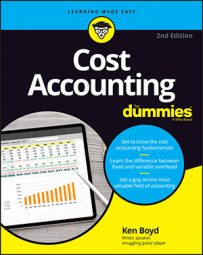In cost accounting, product mix refers to the mix of products you produce. Sales mix refers to the mix of products you sell. They are broadly related. Every company deals with limited capacity, so smart decisions about product mix can greatly increase your profit. You just need to work out the most profitable product mix you can.
Say you produce furniture. The market you sell in is very competitive, so your profit margin (profit as a percentage of sales) is small. One step in your production process requires work to be performed by hand. The work is complex, and you don’t have many people on your staff who can do it. Your capacity (labor hours) is limited, so you need to make sure that every hour worked is as profitable as possible.
You need to allocate your production between two products: the Mellow Yellow chair and the Norwegian Wood chair. The challenge is that each product requires a different number of labor hours. Also, each product has a different contribution margin per unit. Recall that contribution margin equals sales less variable costs. You need to decide on the best mix.
To compare the two products, use contribution margin per hour. This table lists the two products and the contribution margin per hour for each.
| Product Contribution Margin Per Unit | Hours Per Unit | Contribution Margin Per Hour |
| Mellow Yellow chair ($50 per unit) | 2 hours | $25 per unit |
| Norwegian Wood chair ($57 per unit) | 3 hours | $19 per unit |
The Mellow Yellow chair has a higher contribution margin per hour. You should use your available capacity (labor hours) to produce as many Mellow Yellow chairs as needed. In other words, try to fill all of the Mellow Yellow orders, if possible. If there are hours left, use them to produce the Norwegian Wood chair.
Assume you have orders for 6,500 Mellow Yellow chairs. You have orders for 9,000 Norwegian Wood chairs. Now what? This table details how production would look.
| Total Labor Hours Available | 31,000 |
| Mellow Yellow chairs | |
| Customer orders (units) | 6,500 |
| Labor hours per unit | 2 |
| Mellow Yellow hours used | -13,000 |
| Remaining labor hours | 18,000 |
| Norwegian Wood chairs | |
| Customer orders (units) | 6,000 |
| Labor hours per unit | 3 |
| Norwegian Wood hours used | -18,000 |
| Remaining labor hours | 0 |
There’s a two-step process involved. First, you “max out” the Mellow Yellow chair production. You produce 6,500 chairs, and at 2 labor hours per unit, you use up 13,000 labor hours. That leaves 18,000 hours for Norwegian Wood chair production.
You couldn’t fill all of the Norwegian Wood chair orders. There were orders for 9,000 chairs, but you had only enough labor hours left to produce 6,000 chairs (6,000 orders x 3 labor hours per chair).
You made the right decision. After you determined the best use of your labor hour time, you produced the product that created the bigger contribution to profit (contribution margin) first.
Business can be bizarre. Consider that you’ve limited production of the Norwegian Wood chair because compared with the Mellow Yellow chair, there’s less profit in this item.
In the minds of the retailers and customers, Norwegian Wood chairs are now back-ordered, because the manufacturer (you) just can’t keep up with demand. Customers may perceive the Norwegian Wood chair as highly desirable and hard to get. Your limited production may have increased customer interest. (At some point, you might increase capacity or raise prices. The customers may eat it up. Then you’ll be eager to do these calculations again.)

